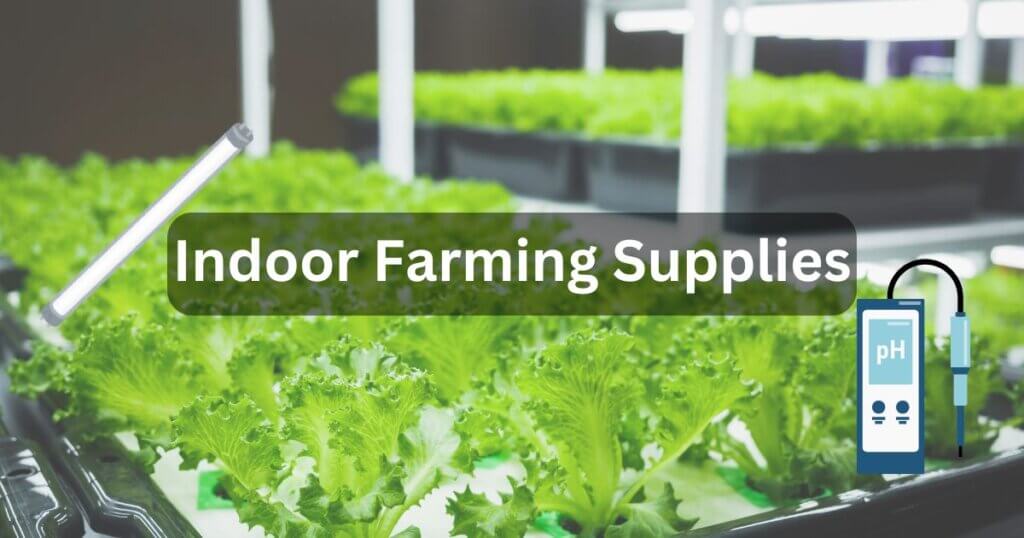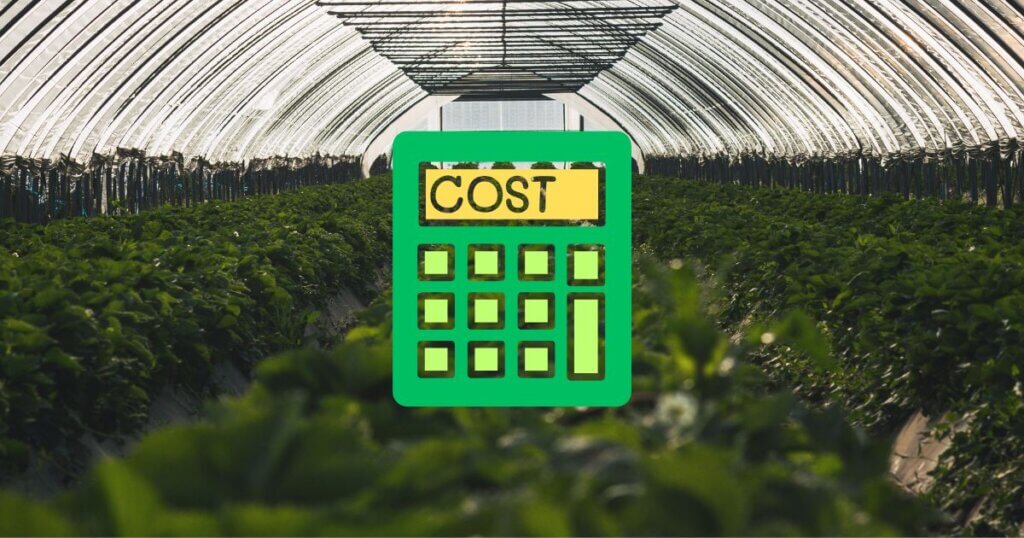Deep Water Culture (DWC) Explained
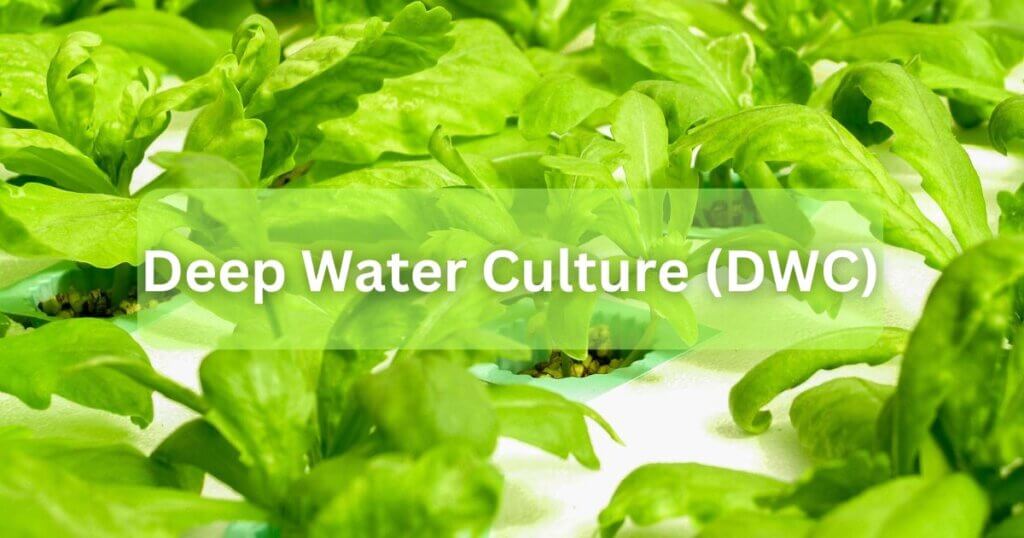
Indoor Farming Hub is an Amazon Associate and earns from qualifying purchases.
Deep Water Culture (DWC) is a highly effective hydroponic system that allows plants to grow in nutrient-rich water. This method gives plants constant access to oxygen, water, and essential nutrients, resulting in rapid and healthy growth. In this article, we will delve into the details of DWC, its benefits, setup process, maintenance requirements, and why it has gained popularity among both beginners and experienced growers.
Table of Contents
What is Deep Water Culture (DWC)?
Deep Water Culture (DWC) is a type of hydroponic system where plant roots are suspended in a nutrient-rich solution, allowing them to absorb essential elements directly. The system typically consists of a reservoir, an air pump, an air stone, and net pots that hold the plants in place. The roots hang freely in the water, allowing for increased oxygen uptake.
DWC is often used for cultivating leafy greens, herbs, and certain flowering plants. The simplicity of this system, along with its effectiveness, has made it a popular choice among hydroponic enthusiasts.
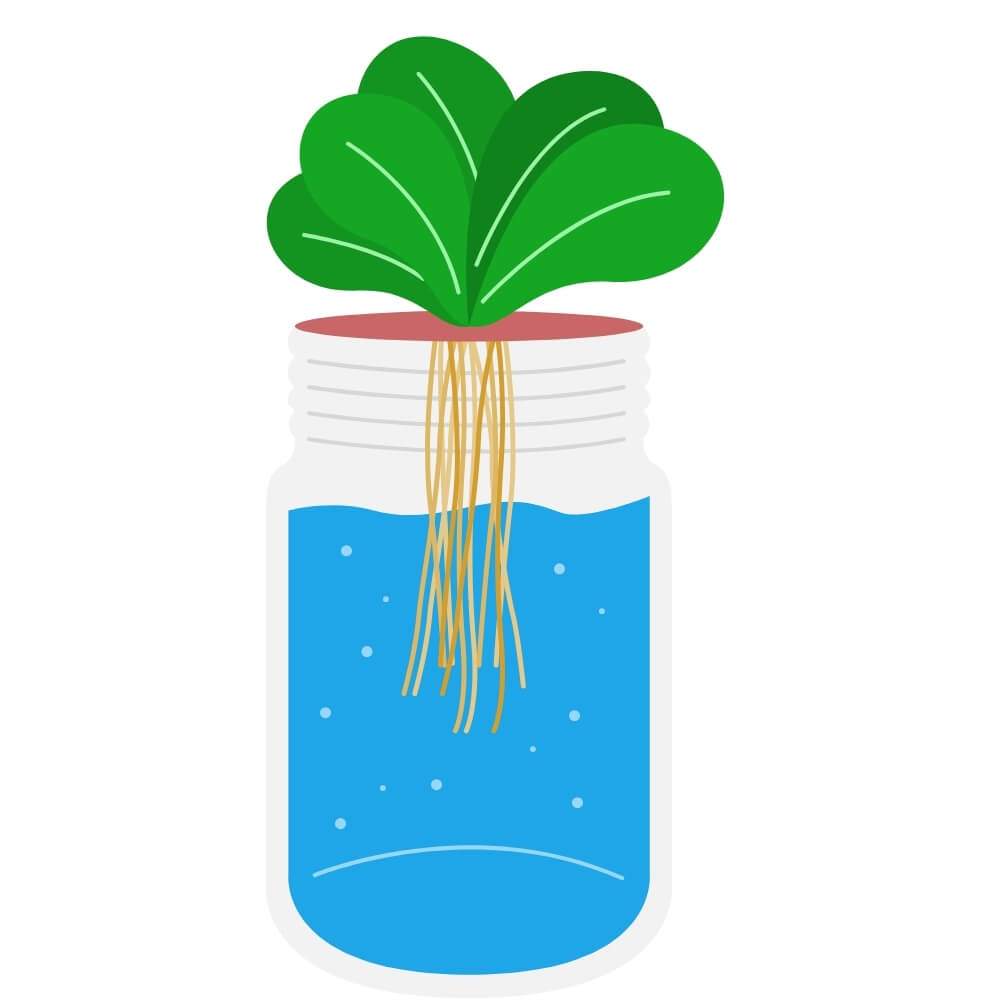
The Benefits of Deep Water Culture
1. Enhanced Nutrient Uptake
In a Deep Water Culture (DWC) system, plant roots remain submerged in the nutrient-rich solution at all times, ensuring continuous access to essential nutrients. This direct and constant exposure allows plants to absorb nutrients more efficiently than in soil, where availability can be inconsistent due to factors like nutrient leaching or compaction. As a result, plants in a DWC system experience rapid growth, producing stronger stems, larger leaves, and more vibrant foliage. The optimised nutrient uptake also contributes to higher yields, making DWC an ideal choice for growers seeking maximum productivity.
2. Improved Oxygenation
DWC systems use an air pump and air stone to continuously infuse the nutrient solution with oxygen, providing plant roots with a steady supply of dissolved oxygen. This oxygenation is crucial for root respiration, which drives nutrient absorption and overall plant metabolism. Well-oxygenated roots develop a more extensive root network, leading to healthier and more resilient plants capable of withstanding environmental stress. Additionally, increased oxygen levels help prevent anaerobic conditions that can promote harmful pathogens, reducing the risk of root rot and other diseases.
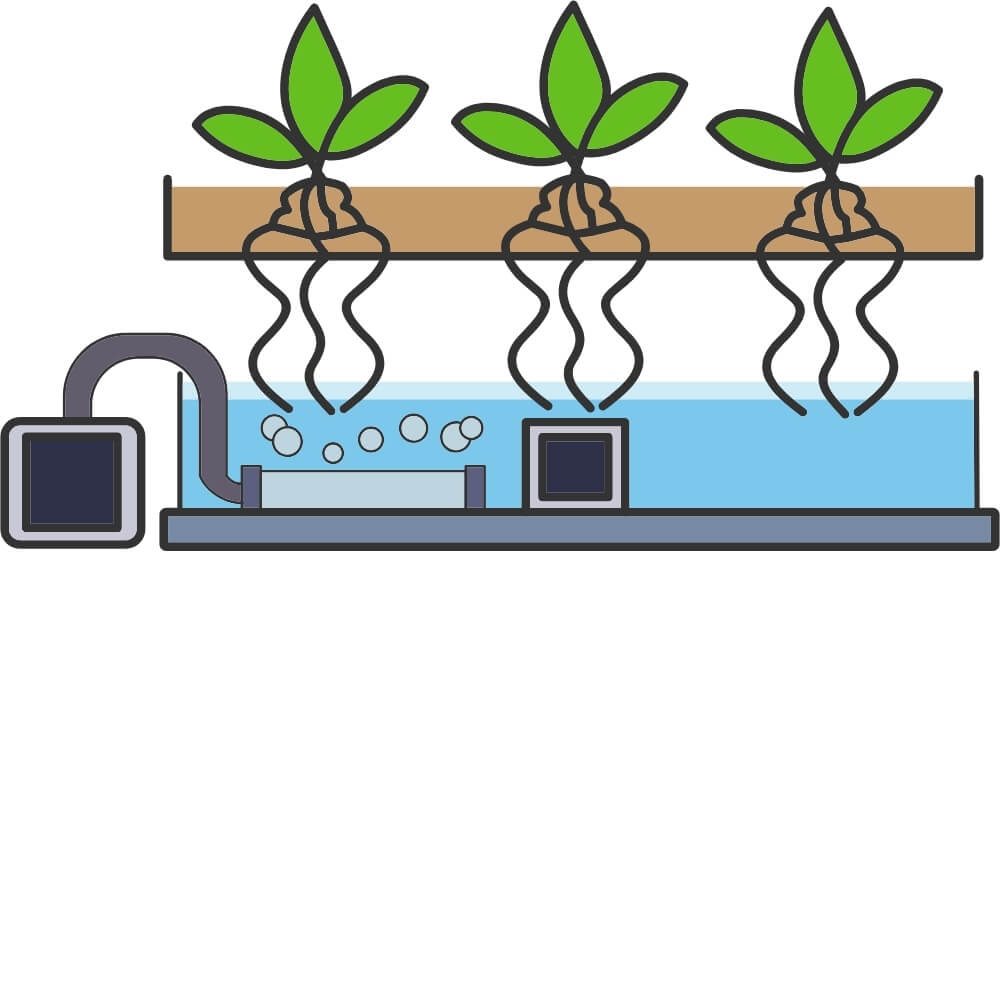
3. Water Conservation
Compared to traditional soil-based gardening, DWC is a highly efficient hydroponic method that significantly reduces water usage by recirculating the nutrient solution. Since the water is contained within the reservoir, there is minimal loss due to evaporation, and plants can access moisture as needed without excessive runoff. This controlled water usage is particularly beneficial in regions with limited water resources, making DWC an environmentally sustainable growing technique. Additionally, growers do not have to water their plants frequently, saving time and effort while maintaining optimal hydration levels.
4. Reduced Risk of Soil-Borne Pests and Diseases
One of the major advantages of DWC is its soil-free environment, which eliminates exposure to common soil-borne pests such as nematodes, fungi, and bacteria. Without soil, these harmful organisms have no habitat in which to thrive, significantly reducing the likelihood of infestations and plant diseases. This cleaner growing environment minimizes the need for chemical pesticides and fungicides, leading to healthier plants and safer, more natural produce. As a result, growers can maintain high-quality crops with fewer interventions, making DWC an excellent option for organic and sustainable cultivation.
Setting Up a Deep Water Culture System
Step 1: Gather the Materials
To set up a DWC system, you will need the following materials:
- Reservoir: A container to hold the nutrient solution.
- Net pots: Containers to support the plants while allowing their roots to hang freely.
- Air pump: Provides oxygenation to the nutrient solution.
- Air stone: Releases bubbles to oxygenate the water.
- Growing medium: Clay pebbles, rock wool cubes, or similar materials to support the plants.
- pH testing kit: To monitor and adjust the pH of the nutrient solution.
- Nutrient solution: A well-balanced mixture of essential plant nutrients.
Step 2: Prepare the Reservoir
Clean the reservoir thoroughly to eliminate any contaminants that could harm your plants. Fill it with water, ensuring enough space remains for the net pots and proper aeration. Add the appropriate amount of nutrients according to the manufacturer’s instructions, stirring well to ensure even distribution. Finally, adjust the pH level to the optimal range of 5.5–6.5 to promote nutrient absorption and healthy plant growth.
The Bluelab Combo Meter is a 3-in-1 device that accurately measures pH, electrical conductivity (EC), and temperature of the nutrient solution, which is crucial for maintaining the right conditions for plant growth in DWC systems.
Step 3: Install the Air Pump and Air Stone
Connect the air stone to the air pump using flexible tubing, ensuring a secure and airtight connection. Place the air stone at the bottom of the reservoir to evenly distribute oxygen throughout the nutrient solution. Turn on the air pump to create a steady flow of bubbles, which will help prevent root rot and encourage healthy root development. Regularly check the pump and air stone for clogs or malfunctions to maintain efficient aeration.
The Hydrofarm Active Aqua Air Pump is a reliable air pump designed to provide efficient aeration for hydroponic systems. It includes multiple outlets for connecting air stones, ensuring proper oxygenation in your Deep Water Culture (DWC) system.
Step 4: Set Up the Net Pots and Plants
Fill each net pot with a suitable growing medium, such as clay pebbles or rock wool cubes, to support plant roots. Carefully insert the plants into the net pots, ensuring their roots extend freely into the nutrient solution below. Position the net pots securely in the reservoir, making sure they remain stable and do not tip over. Proper placement will ensure that roots receive adequate nutrients and oxygen for optimal growth.
The VIVOSUN Hydroponic Net Pots are designed for hydroponic systems like DWC, providing stable support for your plants while allowing the roots to hang freely in the nutrient solution. These durable net pots come in a pack of six, making them perfect for multi-plant setups.
Hydroton Expanded Clay Pebbles are a popular growing medium used in hydroponic systems like DWC. These pebbles provide excellent support for plant roots and help maintain proper aeration in the root zone, which is essential for healthy plant growth.
Step 5: Monitor and Maintain the System
Regularly test and adjust the pH level of the nutrient solution to keep it within the ideal range for plant absorption. Check the water level frequently, refilling as necessary to prevent roots from drying out and to maintain proper nutrient balance. Inspect plants for any signs of deficiencies, diseases, or pests, addressing issues promptly to avoid stunted growth. Consistently maintaining the system will promote strong, healthy plants and maximize yields.
The General Hydroponics Flora Series is a complete 3-part nutrient system that provides all the essential nutrients for plants growing in hydroponic systems. It includes FloraGro, FloraBloom, and FloraMicro, which work together to support healthy growth and maximize yields.
DWC: An Ideal System for Plant Growth
Deep Water Culture (DWC) is an ideal hydroponic system for maximizing plant growth and optimizing nutrient uptake. Its simplicity, combined with its numerous benefits, has made it a popular choice among beginner and experienced growers. By setting up a DWC system and providing plants with a nutrient-rich environment and ample oxygenation, you can achieve impressive yields and enjoy the satisfaction of successful hydroponic gardening.
The Aqua Aurora 4″ Air Stone is designed to provide efficient oxygenation for hydroponic systems. This air stone produces fine bubbles that increase the surface area for oxygen transfer, ensuring that plant roots stay well-oxygenated.
So, why wait? Dive into the world of Deep Water Culture and witness your plants’ remarkable growth and health as they flourish in this unique hydroponic system.
Conclusion
Deep Water Culture (DWC) is a hydroponic system that allows plants to thrive in a nutrient-rich water solution. This method offers several advantages, including enhanced nutrient uptake, improved oxygenation, water conservation, and a reduced risk of soil-borne pests and diseases. Setting up a DWC system involves:
- Gathering the necessary materials
- Preparing the reservoir
- Installing the air pump and air stone
- Setting up the net pots and plants.
Following these steps and providing proper maintenance can create an ideal environment for your plants to grow and flourish in a Deep Water Culture system.
FAQs – Deep water culture
1. Can I use tap water in a Deep Water Culture (DWC) system?
Yes, but it depends on your water quality. Tap water often contains chlorine, chloramine, or high levels of minerals that may affect plant growth. It’s recommended to let tap water sit for 24 hours to allow chlorine to evaporate or use a dechlorinator. Testing and adjusting the pH and EC levels before use is essential.
2. How often should I change the nutrient solution in a DWC system?
Typically, the nutrient solution should be changed every 1–2 weeks to prevent nutrient imbalances and buildup of unwanted salts. However, topping up with fresh water and nutrients in between full changes is essential to maintain stable conditions.
3. What plants struggle to grow in a DWC system?
Root vegetables like carrots, potatoes, and onions are not well-suited for DWC since they require soil for proper root development. Large, heavy plants like fruit trees may also be challenging due to the system’s inability to support significant weight.
4. Can I run a DWC system without an air pump?
Not recommended. The air pump provides oxygen to the roots, preventing root rot and promoting healthy growth. Without aeration, the roots can suffocate, leading to stunted growth or plant death. If power outages are a concern, backup aeration solutions like battery-powered pumps or adding hydrogen peroxide can help temporarily.
5. What are common problems in a DWC system, and how do I fix them?
Root rot (caused by poor oxygenation or high temperatures) → Increase aeration, lower water temperature, and use beneficial microbes. pH fluctuations → Regularly test and adjust pH to maintain 5.5–6.5. Algae growth (due to light exposure) → Cover reservoirs to block light. Nutrient deficiencies → Ensure proper nutrient mix and maintain correct EC levels.
Other Useful Resources Related To Deep Water Culture
- Hydrokultur: An article from the German Wikipedia that delves into various hydroponic cultivation methods, including Deep Water Culture (DWC), discussing its setup, benefits, and considerations.
- Deep Water Culture: The English Wikipedia page offers a comprehensive overview of DWC, covering its definition, plant growth requirements, and variations like Recirculating Deep Water Culture (RDWC).
- Kratky Method: An article detailing the Kratky Method, a passive hydroponic technique related to DWC, emphasizing its simplicity and effectiveness for certain crops.
- Passive Hydroponics: An overview of passive hydroponic methods, including the Kratky Method, highlighting their applications and benefits for both commercial and home growers.
- Deep Water Culture vs. Recirculating Deep Water Culture (RDWC): An informative comparison highlighting the differences between DWC and RDWC systems, including their advantages and disadvantages.








